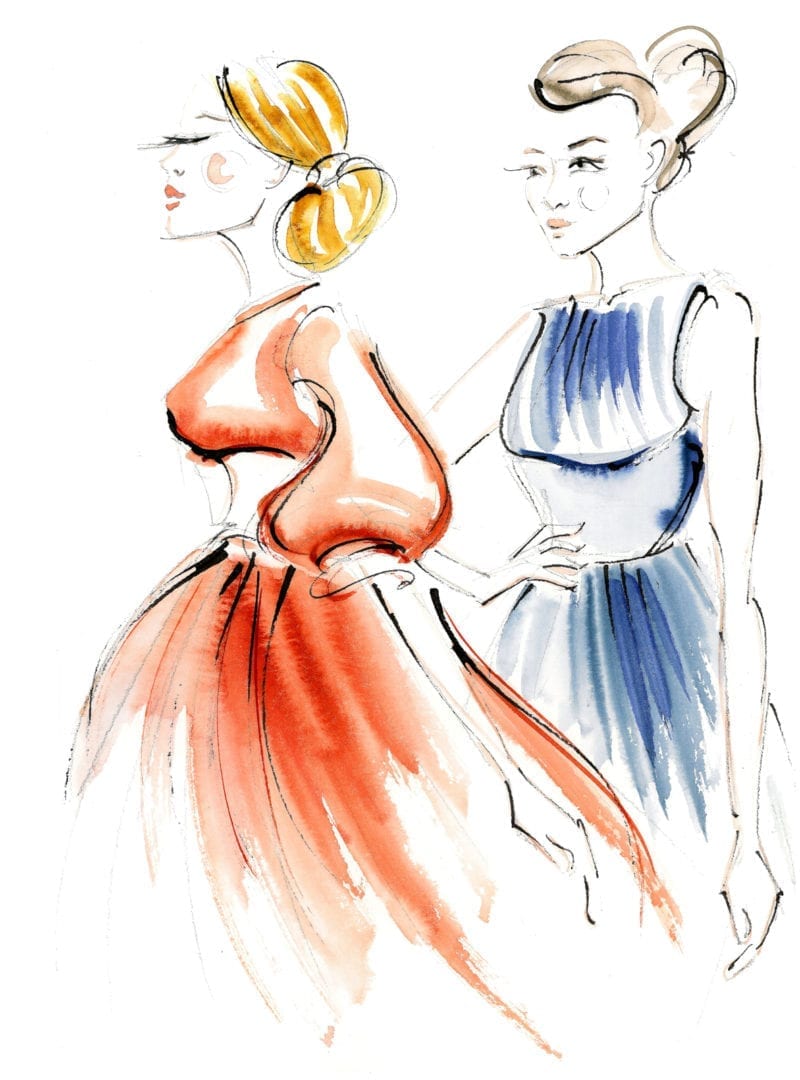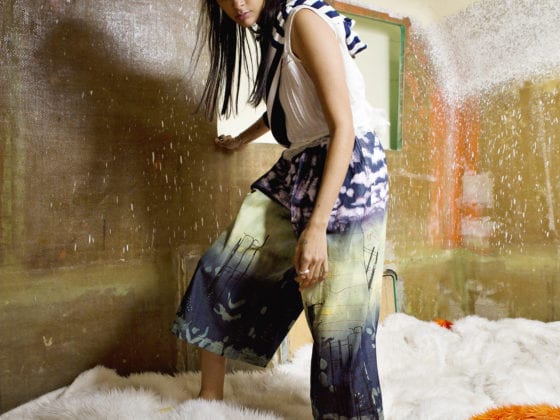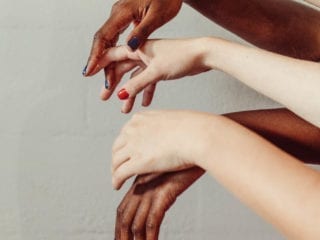On most Christmases of my somewhat-older childhood, I watched “Little Women,” squished between my own sisters on our family couch. As we jostled for more share of the blanket covering our knees, we visited the familiar scenes of Meg, Jo, Beth and Amy March being led by their Marmee as they grow up in post-Civil War America.
This Christmas, Greta Gerwig’s adaptation of Louisa May Alcott’s “Little Women” opened in theaters. As families across the country celebrated Christmas, this much-loved family of sisters—who feel like family— appeared with their story in its latest iteration. Gerwig’s “Little Women” stars Saoirse Ronan as Jo, Emma Watson as Meg, Florence Pugh as Amy and Eliza Scanlen as Beth.
Viewers will leaving the theatre feeling as though they’ve lived a lifetime and felt nearly every emotion. (I cried several times.) As always, it’s sad to leave Concord, MA and the New England bygone charm of pastoral, picturesque vistas and simple beauty.
Beyond the cinematic loveliness and period costumes, it is the sisters who are hardest to leave. It always is. It’s why we have versions from George Cukor (1933), Mervin LeRoy (1949), Gillian Armstrong (1994) and Vanessa Caswill’s 2017 three-episode series of PBS, as well as others I’m sure I’ve forgotten.
It is the sisters who are hardest to leave. It always is.
At one point in the film, Jo March remarks to her sisters that no one would want to read her story about domestic life’s joys and struggles. Ah, Jo. But isn’t that what life is—joys and struggles? Isn’t that the exact reason why this story from Alcott has lasted in all of its versions over the years?
We see ourselves in this family or at least we see their shared humanity. Gerwig’s greatest success in this adaptation is the reality she paints of sisterhood and womanhood. These little women have dreams, tempers, jealousies, disappointments, hopes, difficulties and loves. They are different, each their own person, but they are bonded by their sisterhood and their shared struggle in womanhood, but mostly in humanity.
We see ourselves in this family or at least we see their shared humanity.
Gerwig clearly chose to emphasize the economic and occupational plight of women like the March sisters. Throughout the film, this theme returns. More than once, marriage is discussed as being “mercenary,” though Gerwig does nod to those like Meg whose “dreams are different, but not unimportant” and choose to marry and start a family.
Gerwig focuses on the story’s heroine, Jo, as she faces the challenge of trying to publish her writing in a time when women could not work and could not inherit money. Women were property, belonging either to their fathers or their husbands.
Most notably this is seen by the film’s circular beginning and ending. At both places in the movie, Jo visits the publisher Mr. Dashwood, attempting to have her writing published. Rather than end the movie with marriage, as is typical, she returns to this seemingly more significant milestone in Jo’s life—holding her own book.
Although Gerwig’s adaptation captures the spirit of the March sisters well and highlights their individual (and imperfect) attempts at achieving their dreams, its storytelling is decidedly different than others. Viewers who expect Gerwig to be faithful to the book, or to older film versions, will be disappointed. While this “Little Women” deviates from the classic tale, it maintains the original foundation of female friendship that is so unique among sisters.
[This version of “Little Women”] maintains the original foundation of female friendship that is so unique among sisters.
Because the main relationships that Gerwig develops are Jo’s interpersonal relationship with herself and the relationships between the sisters, some of the other characters fall a bit more flat and get less screen time. Meryl Streep’s Aunt March suits her style and conveys the woman’s sharpness with humor. Laura Dern isn’t quite convincing as Marmee, but her best scene is one with Jo, when Marmee tells her that wanting to be loved is not the same thing as loving someone.
Overall, Gerwig’s “Little Women” is not Alcott’s “Little Women,” but it provides a different interpretation of the lives of women like the March sisters and what can still be learned from them in 2020. Alcott and Gerwig both understand that the human experience is rooted in relationship. Viewers who already have a strong connection with these characters will enjoy Gerwig’s take.
If anything, it is a reminder to hold on to what’s truly important in life. As sweet Beth says, “It’s like the tide. It goes out slowly, but it can’t be stopped.”
What were your thoughts on the recent rendition of Little Women?
Illustration via Emily Fages, Issue No. 12












2 comments
Yes, Little Women makes us feel feelings. Indisputably. But my perspective is that the power of Little Women is that we all see ourselves in all the sisters, and Greta Gerwig’s version portrays this powerfully.
We all have Meg-moments, distracted from the relationships in our lives that matter most, eyes on financial gain or material possessions. I love that Meg overcomes her materialistic desires and marries the pauper she truly loves. And realistically, it is a struggle for her to live with that choice. As it is for us a struggle to look to the things that truly matter to us each day rather than the advertising constantly beckoning us to want, want, want.
We all have Beth-moments, moments when we give of ourselves, sometimes to the point where we have nothing left to give. Beth, the least realistic of the sisters [I always felt], is us as giving, generous, unselfish. And Beth too struggles just a little, as we do, with feeling like a martyr. Growing up I always liked Beth the best. But let’s be honest. She is the least like me in my actual, everyday life.
Amy is everyone’s little sister, and the little sister in all of us. Feeling left out and hating it. Angry and vindictive. Petted, preening, and presumptuous. Disappearing for the hardest moments and leaving others to shoulder her share of the burden. We recognize her and like to pretend we don’t. One of Gerwig’s best decisions in her film is to be generous with Amy, to grant her some emotional maturity, and to paint her marriage with Laurie as the resolution the characters didn’t even know to wish for, giving both characters a chance to grow together in love instead of dooming them to be miserable with each other. If there is hope for Amy, there is hope for the Amy in us.
Finally Jo. Here is [in my opinion] where Gerwig’s feminism steers her wrong. Because the book clearly shows how Jo’s temper hurts those she loves, how she thinks she is stronger than the forces of nature, stronger than death. Bending people around her to her will. Jo is stubborn and willful. And that’s a fault sometimes – but not always. Jo’s willfulness is often applied in a direction of kindness, creativity, and love. But like us, Jo has to make peace with the limits of what she can control. She has to resolve to do her best and trust God to take care of the outcome. Gerwig’s Jo doesn’t seem to develop a concept of this. Really, she is a picture of womanhood today. We fiercely struggle for what we think we want. We are hurt and bewildered by people who won’t do what we think they should, by events beyond our control. We don’t like to acknowledge it, but sometimes we don’t even know what we want – we exhaust ourselves to achieve something and find that it doesn’t give us the fulfillment we’d hoped for. Also, we don’t write about this a lot, but we are eventually forced to face our own mortality and the limits of our life’s accomplishments, and that is a very dark and painful thing in a world where we pretend we can have whatever we want as long as we try our hardest.
So in summary, Little Women [the material] is awesome. Gerwig did some really great work with it. The story itself is powerful and as we watch the movie we feel like it knows all about us. Over and over during this film, I said, “That is me.” About Jo. And Meg. And Amy. And even Beth sometimes. If you haven’t seen it, go see it. I think you’ll feel the same.
I love your review! I’ve heard so much about the new Little Women but have yet to see it – boo!
–
Charmaine Ng | Architecture & Lifestyle Blog
https://charmainenyw.com